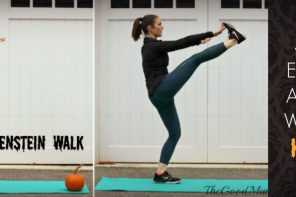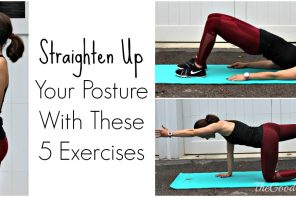I have been a little quiet on the blog in recent months because I have been busy studying for my personal training certification. I should have mentioned it before, but honestly, I was afraid I wouldn’t pass!
Fortunately, I took my ACE® Personal Trainer Certification exam and passed! It was a little more difficult than I expected. I had to learn about specific muscles, how to tell if those muscles are weak or shortened and how to develop exercises and workouts to address those issues, among other things. Now that I’ve passed, I feel such a relief, and I’m excited to start putting my newly acquired knowledge to use.
5 Things All Personal Trainers should know. Click To TweetI was fairly active before I started working my way through the personal training course, so I thought I knew a great deal about all things fitness. I was surprised to find there was so much I didn’t know. Here are just 5 Things I Learned While Becoming a Personal Trainer.

5 Things I Learned While Becoming a Personal Trainer
1. The importance of posture
Recently, I pulled out my back while taking a ballet class. I realize now that my poor posture played a critical role in my injury. My lower back tends to arch too much, also known as lumbar lordosis. It’s often the result of too much sitting and being pregnant. Thanks a lot, kids. All that excessive arching of my lower back has caused my abdominals to get weaker. So, when we were doing a movement that required the use of my abdominals, too much stress was placed on my lower back and BAM! I wound up injured.
Before starting any type of exercise program, you want to make sure that your posture is in check. Now, you don’t have to obsess over it since absolutely perfect posture is rare, but it’s still imperative that you take the time to work on your posture and learn proper technique before diving into exercises. Good posture not only helps prevent injury, but it’ll help make you look taller and even helps with your breath control. Check out a few common posture problems and some exercises to help fix them on Built Lean.
2. The principal of overload
The principal of overload is necessary to understand if you want to get stronger, faster, and/or more in shape. Basically, it means that in order to improve, you must continually perform at a greater rate than normal as your body adapts. A workout video using the same amount of weight and repetitions over and over again isn’t going to do much to improve your fitness level.
Women have the tendency to shy away from heavier weights and stick to the 1-2 pounders, thinking light weights will help them get more toned. When in reality there’s no need to fear the heavier weights. You’ll have to up the ante if you want to increase your speed, strength, or even get more toned.
3. There’s no need for soreness and the principal of progression
The principal of progression goes hand-in-hand with the principal of overload. Yes, it’s important to continually increase the intensity of your workout, but by how much? The principal of progression can be explained with the help of Goldilocks. You don’t want to increase the intensity by too much or too little. You need to overload the muscles just right. That means, gradual progressions are the way to go. There’s no reason you need to be excessively sore for days and days after working out. Someone who decides to go crazy and jump into really tough workouts will not get in shape any faster than another person who gradually increases her training load. They are just more likely to get hurt. Slow and steady wins the race. There are no “quick fixes” when it comes to fitness.
4. Scope of practice
A personal trainer’s scope of practice, or what exactly she is permitted to do, is one of the first things covered in the course, and with good reason. If a personal trainer starts diagnosing injuries or prescribing diets when she doesn’t have the specific training, someone could get hurt.
Personal trainers are allowed to design exercise programs for clients. Trainers are not allowed to make diagnosis or prescribe any type of eating plan. Be weary of any trainer trying to recommend or sell a particular supplement to you. Yet, don’t be afraid to ask your trainer any questions you may concerning nutrition or injury-prevention. Trainers can educate or help research or even refer you to another professional, such as a dietician or physician.
5. The benefits of exercise
Alright, maybe I did know a thing or too about the benefits of exercise before starting my personal training certification program. Though, I really didn’t know the full extent. Here are just a few things that benefit from exercise: improvements in cardiovascular health, bone strength, cholesterol levels, blood pressure, stress relief, and weight management (9 Health Benefits of Exercise, ACE®). Another important point I learned is that it doesn’t take a whole lot to reap the benefits of exercise. Even just a little bit is better than doing nothing at all.
I thoroughly enjoyed my personal training certification course from ACE®. It made me really excited about fitness and a career as a personal trainer. With my new knowledge base, I plan on sharing a lot more informative articles and exercises to help you with your fitness journey.








I’m so glad to read number three! I had that all wrong! Thanks for sharing!
Congratulations! My husband was a personal trainer for years (I think his cert is expired now) and he was the one who taught my friend and I not to be afraid of fewer reps with higher weights!
lauren recently posted…Social Media Safety
Awesome Job Trisha!!! I would love to get 6 week workout newsletter, but I am already signed up… Will you send it to everyone?
Way to go!
Slow and steady, amen! Love this post and subscribed. Congrats! Can’t wait to see what you do next!!
Kristen recently posted…Free Bathroom Printable
Great post, such an informative post! 🙂
Fitness is not easy. It needs hard work and dedication to achieve. And with a little boost of nutrition workout supplements you can achieve it.
pre workout nutrition recently posted…Stacked Protein (Powder) (12 Servings) (1lb)
I started working with a trainer last week and absolutely love it. While I am dedicated at doing my runs on schedule, I am kind of a slug at the gym. The accountability thing works for me too!
Workout supplements does not make you lazy. It just helps you to be more effective in your workout.
pre-workout nutrition recently posted…Trans4orm Sample (1 Serving)
Some people just need workout supplements to help them start the weighing down.
pre workout nutrition recently posted…ENGN® SHRED Pre-Workout Engine® (Powder) (30 Serving)*
At Sport Court South Florida, we provide a multitude of services and products, from custom basketball court flooring to resurfacing your tennis court. Visit http://www.sportcourtsouthflorida.com/products
Without personal trainer we don’t know what kind of exercise we have to do.
I have had so many personal trainers trying to sell me supplements, whey proteins and all! Its enlightening that they are not allowed to do that.
Becoming a personal trainer sounds like a mix of motivational speaker, fitness guru, and part-time therapist! Love the honesty in learning to balance tough love with encouragement—’Drop and give me 20!’ but also ‘You’re doing amazing, sweetie!’ Here’s hoping your clients repay you with squats and maybe the occasional smoothie. 🏋️♀️🍎